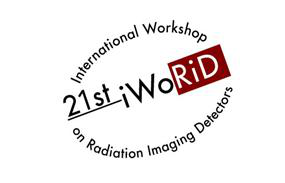Speaker
Description
The Compton camera concept is based on reconstruction of recorded Compton scattering events of incoming gamma rays. Usually, two or more detectors (layers) are used for constructing the Compton camera. The scattering of primary gamma ray occurs in the first detector (called scattering detector – usually thin) recording position and energy of recoiled electron. The scattered gamma quantum continues towards the second detector (called absorption detector - usually thick) where it is absorbed. The second detector records the energy and position of this scattered gamma. Then, using Compton scattering equation it is possible to determine the scattering angle and estimate possible directions of the original gamma ray as a surface of the cone. When the Compton camera records number of such events the location and shape of the gamma source can be reconstructed.
The Compton scattering of primary gamma and absorption of both recoiled electron and scattered gamma can often occur only within a single detector. By knowing the position and energy of both recoiled electron and scattered gamma within the detector, the same reconstruction principles as in the case of two detector can be applied and location of the gamma source determined.
Timepix3, a hybrid single photon counting pixel detector, is perfect device for creation of a compact Compton camera. Timepix3 is an event based readout chip (every hit pixel is immediately sent to a readout) and can record time-of-arrival (ToA) and energy of incident gamma simultaneously in each pixel. The chip offers high energy resolution (1 keV at 60 keV, 7 keV at 356 keV) as well as time resolution (1.6ns). The Timepix3 readout chip can be combined with different sensor materials (Si, CdTe, CZT).
In this contribution we present a very compact single detector system for imaging with gamma-rays using Compton camera principle. The system consists only of a single layer of hybrid pixel detector Timepix3 with a thick 2 mm CdTe sensor optimized for gamma-ray tracking. Thanks to the high precision ToA measurement of Timepix3, it is possible to measure the time of charge transport within the sensor. Based on this measurement, the relative depth (vertical position) of the interaction within the sensor can be determined. This relative depth of two coincidence events in the detector can be used for calculation of their vertical distance. The knowledge of position and energy of two coincidence events allow us to estimate the possible direction of the original gamma. The angular resolution of the presented Compton camera depends on the detected energy and reaches units of degrees.




